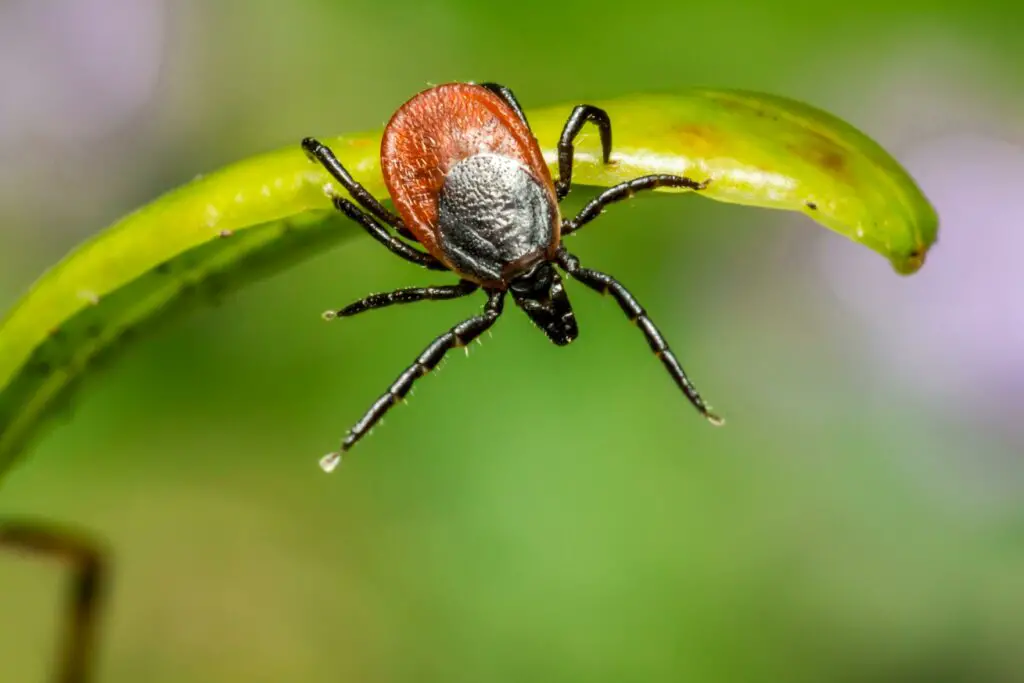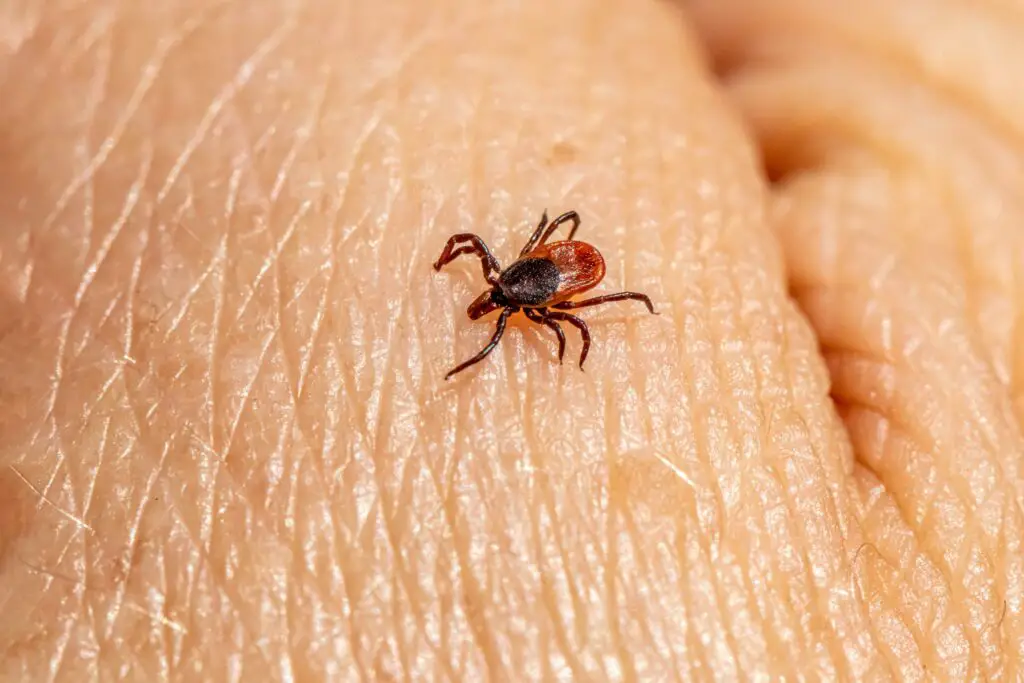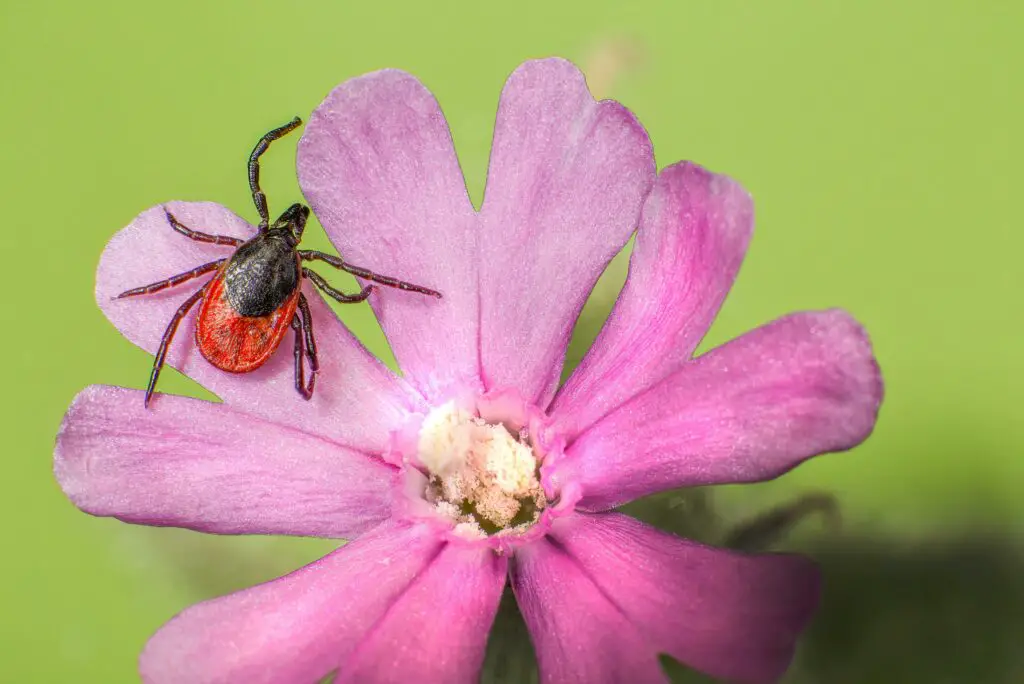Nature is the home to an incredibly versatile array of species, but ticks are definitely one of those that we tend to avoid at all costs.
These tiny arachnids, that are related to spiders, mites, and scorpions, are in fact parasites that survive by attaching themselves to larger animals and feeding on their blood. Humans aren’t spared either. Sadly, these insects carry harmful bacteria that can spread disease to people.
Sadly, tick-borne diseases are at an all-time high, with about 50,000 cases reported each year, and far more going unreported.

There are different types of ticks, and unfortunately, they sometimes find their way to people’s homes. The types most commonly found in homes are the black-legged tick, the dog tick, and the brown dog tick.
- Black-legged Ticks – known as deer ticks, these ticks are typically brown or black in color and have a flattened, oval-shaped body. They are commonly found in wooded areas and can transmit Lyme disease.
- Dog Ticks are larger and can range in color from brown to reddish-brown. They have a tough, shield-shaped body. Dog ticks can transmit diseases such as Rocky Mountain spotted fever.
- Brown Dog Ticks are brown in color and have a slender body.
Although the tick season is between March and October, or sometimes longer, we should be wary of this insects all year round. In fact,if beaten by a tick, a person can develop symptoms even after two or three months.

The bite itself isn’t painful and can cause swelling, itchiness, blistering, and bruising. The bad thing is that ticks also carry and transmit severe diseases, most commonly Lyme disease, as well as Rocky Mountain spotted fever, ehrlichiosis, and babesiosis.
Initially, Lyme disease develops as a circular red ‘bull’s eye’ rash around the site of a tick bite. However, not everyone gets a rash and you should also watch out for a flu-like illness with fever, headache, tiredness and general aches and pains.
The best way to prevent being bitten by a tick is to avoid tall grasses and areas where ticks thrive (such as moorlands and woodlands), especially during the warmer months.
In case you do get bitten, you should remove the tick as soon as possible in order to prevent infections.

These are some of the ways of safe removal.
- Use fine-tipped tweezers: Use clean, fine-tipped tweezers to grasp the tick as close to the skin as possible.
- Pull gently: Apply steady upward pressure, being careful not to squeeze or crush the tick. Aim to remove the tick in one smooth motion without twisting or jerking. Twisting or jerking can cause the tick’s head to break off and stay inside the skin, where it can still transmit disease.
- Clean the area: After removing the tick, clean the affected area with soap and water or an antiseptic solution. Monitor the site of the bite for any signs of infection or a rash, and consult a healthcare professional if necessary.

If by any chance ticks find their way into your home, take immediate action in order to prevent infestation. Most times, ticks are brought into your home in case they stick on your clothes or onto your pets.
- Isolate the area: If you have identified the presence of ticks in a specific area, keep pets and children away from that space.
- Wear protective gear: Put on gloves and a long-sleeved shirt to protect yourself from potential tick bites.
- Clean the area: Clean the area where you found the tick. If it is in bedding, wash the sheets. Inspect the area to ensure there are no more ticks that are present. Dispose of the tick by either flushing it down the toilet or sealing it in a container or ziplock bag before placing it in the trash.
Rescuers Find Scared, Injured Pup Trying To Hide Himself From Humans In A Bag
In a heart-wrenching scene that unfolded in a bustling city, a cry for help echoed through the streets—a plea for mercy from a scared and injured puppy, hidden away in a desperate attempt to shield himself from the world.

The call came to Animal Aid, an organization dedicated to the welfare of animals in distress. With urgency in their hearts, they mobilized their team and set out to rescue the frightened pup from the shadows of fear.
As they approached the scene of the distress, they were met with a sight that pierced their souls—a small, trembling figure cowering beneath a bag, his eyes wide with terror and pain. It was clear that this pup had been through unimaginable suffering, his body bearing the scars of neglect and abuse.

With gentle hands and soothing words, the rescuers sought to coax the pup out from his hiding place, offering reassurance and comfort in the face of his fear. But the pup remained wary, his instincts telling him to retreat further into the darkness.
Undeterred by the challenge before them, the rescuers employed a clever tactic—they used crackers, a simple yet effective lure to entice the pup out into the open. Slowly but surely, the scent of the treats proved irresistible, and with cautious steps, the pup emerged from his hiding spot, his eyes wary but curious.

With a mixture of relief and determination, the rescuers gently scooped up the pup, cradling him in their arms as they whisked him away to safety. And as they arrived at Animal Aid’s facilities, they knew that the journey was far from over—the pup would need extensive medical care and rehabilitation to heal his wounds, both physical and emotional.

But despite the challenges ahead, there was hope in their hearts—for the pup, and for all the animals like him who had been cast aside and forgotten by society. With each passing day, the pup grew stronger and more confident, his spirit buoyed by the love and support of those around him.

And today, thanks to the tireless efforts of Animal Aid and the unwavering kindness of strangers, the once scared and injured pup is thriving—a testament to the resilience of the canine spirit and the power of compassion to transform lives.

So here’s to Jumper, the brave little pup who dared to hope in the face of adversity, and to all the animals who have found solace and sanctuary in the arms of those who care. May their stories inspire us to be kinder, more compassionate beings, and may we never turn a blind eye to those in need.
Watch the video below for more information.



Leave a Reply